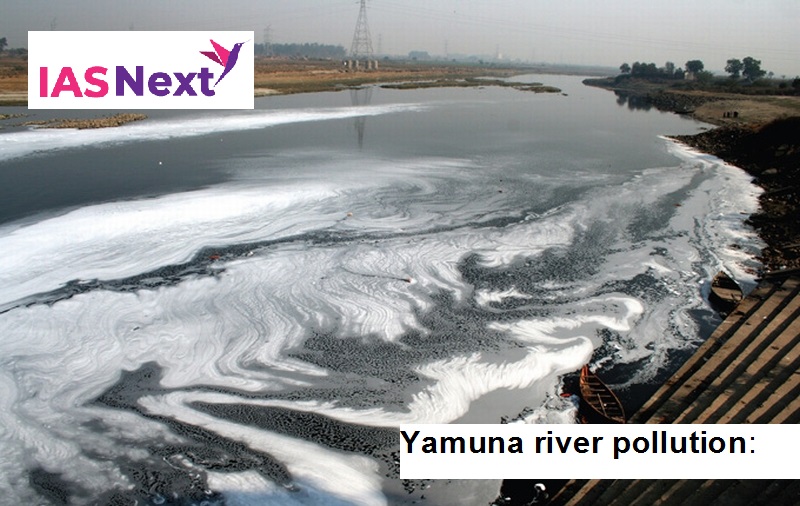CURRENT AFFAIRS
Get the most updated and recent current affair content on Padhaikaro.com
Yamuna river pollution
- IAS NEXT, Lucknow
- 16, Mar 2022

Reference News:-
According to estimates made by the Central Pollution Control Board (CPCB), Delhi generates 3,800 million litres of sewage per day. NMCG is looking into ways to prevent this.
Background:
The over 1,300-km-long Yamuna is among the most polluted rivers in the country and also provides water to more than half of the national capital.
- Just 2% or 22 km of Yamuna falls in Delhi, but 98 % of pollution in the Yamuna comes from the national capital due to untreated or semi-treated industrial effluents or sewage that is being discharged into the river in the 22 km stretch.
Why is Yamuna so polluted?
- The sewage treatment plants of Delhi are major contributors of the Pollutants being discharged in the river.
- Pollutants discharge from different types of industry is also a major issue.
- Agriculture activities along the banks of the river in Delhi contributes to river pollution.
- Agricultural waste and pesticide discharge from the Haryana field also contributes to the pollution.
- The low volume of water flow in the river causes the pollutants to accumulate and raise the pollution level.
About Yamuna River:
- The river Yamuna is a major tributary of river Ganges.
- Originates from the Yamunotri glacier near Bandarpoonch peaks in the Mussoorie range of the lower Himalayas in Uttarkashi district of Uttarakhand.
- It meets the Ganges at the Sangam in Prayagraj, Uttar Pradesh after flowing through Uttarakhand, Himachal Pradesh, Haryana and Delhi.
- Tributaries: Chambal, Sindh, Betwa and Ken.